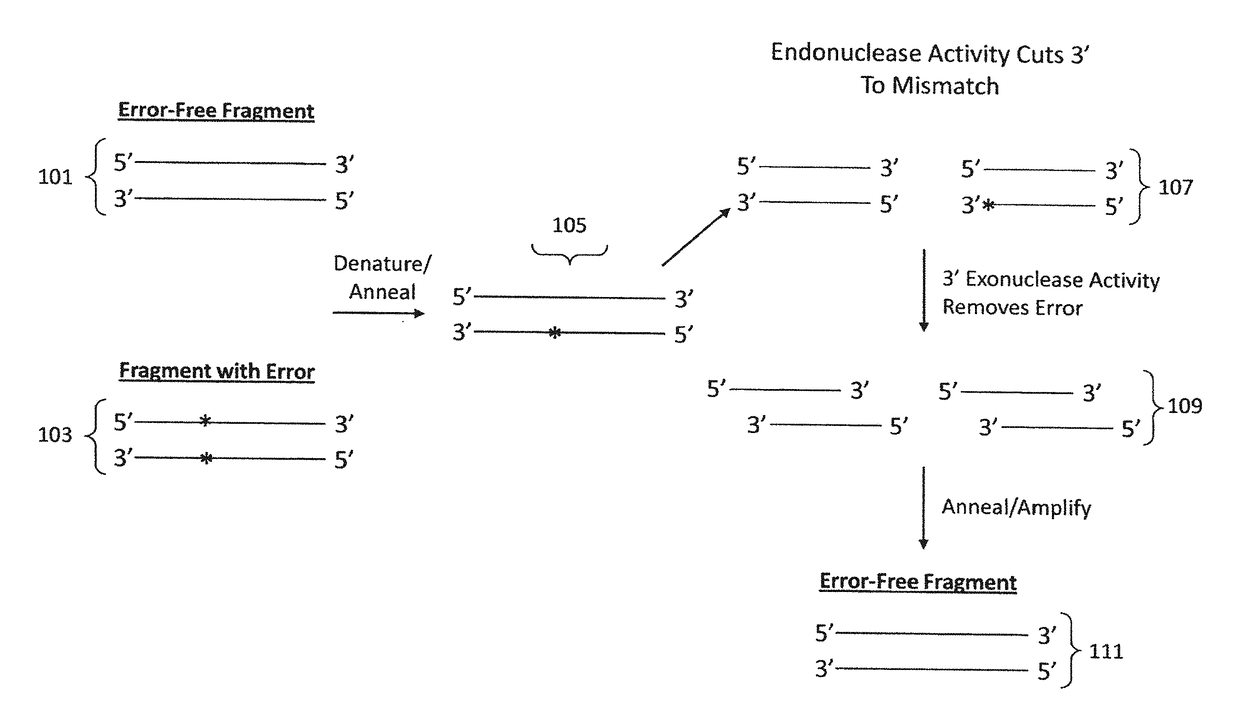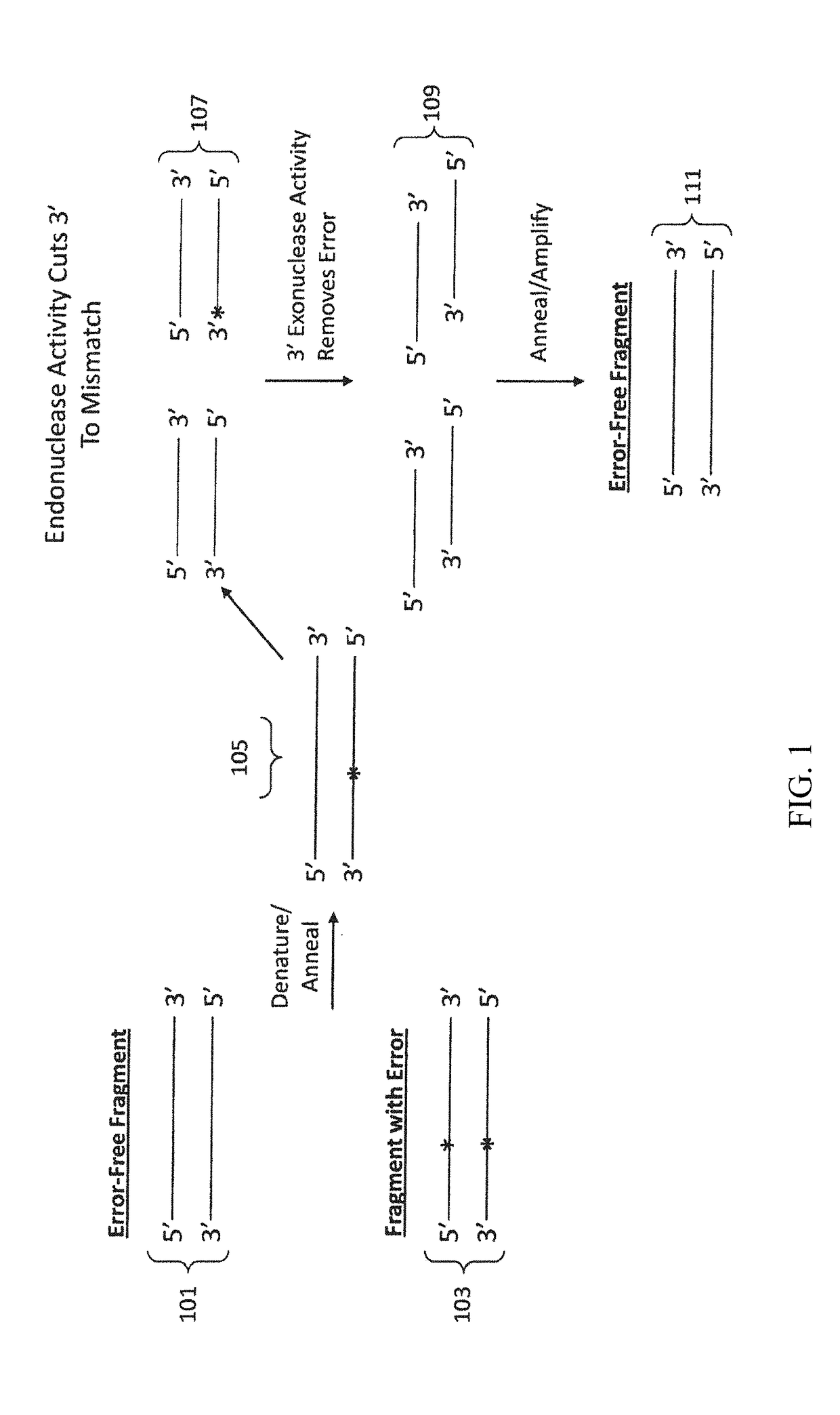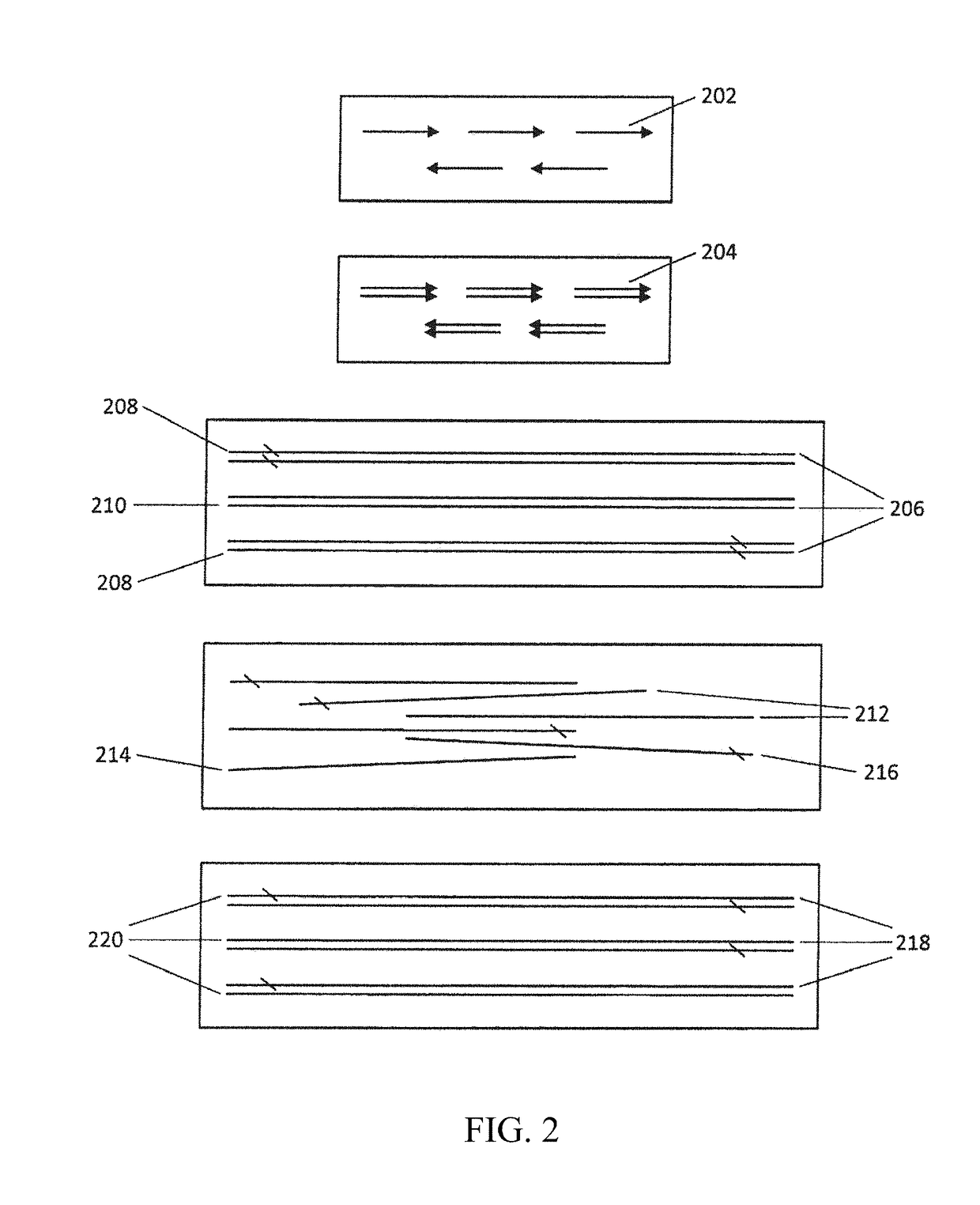Materials and methods for the synthesis of error-minimized nucleic acid molecules
a nucleic acid and error-minimization technology, applied in the field of molecular biology and genetics, can solve the problems of high cost of oligonucleotide purification and difficult reduction of errors introduced into the desired gene sequence, and achieve the effect of reducing the frequency of nucleotide mismatches
- Summary
- Abstract
- Description
- Claims
- Application Information
AI Technical Summary
Benefits of technology
Problems solved by technology
Method used
Image
Examples
example 1
Assembly of Synthetic HA and NA Genes from Oligonucleotides
[0103]Synthetic gene products were assembled from a plurality of oligonucleotides with overlapping sequences at their terminal ends using Gibson Assembly™ (Synthetic Genomics, Inc., San Diego, Calif.) as previously described (see, e.g., US Patent Application No. 2010 / 0035768). Genes included representative hemagglutinin (HA) genes and representative neuraminidase (NA) genes.
Reagents
5× Isothermal (ISO) Buffer
[0104]The 5×ISO buffer contains 25% PEG-8000, 500 mM Tris-HCl pH 8.0, 50 mM MgCl2, 50 mM DTT, 1 mM each of the 4 dNTPs, and 5 mM NAD.
[0105]Six ml of this buffer can be prepared by combining the following:[0106]3 ml of 1 M Tris-HCl pH 8.0[0107]300 μl of 1 M MgCl2 [0108]600 μl of 10 mM dNTPs[0109]300 μl of 1 M DTT (1.54 g dissolved in dH2O up to 10 ml)[0110]1.5 g PEG-8000[0111]300 μl of 100 mM NAD (Sigma; 0.66 g dissolved in dH2O up to 10 ml; resuspend by heating at 50° C. followed by continuous vortexing)[0112]Add water to...
example 2
Cloning of Assembled Genes into Cloning Vector
[0136]In order to clone the assembled gene products into the PKS10 cloning vector, the plasmid was first amplified with primers to create matching overlapping sequences and the termini for a subsequent assembly reaction with the assembled gene product.
Preparation of Cloning Vector
[0137]The universal PKS10 cloning vector as amplified by PCR as follows:[0138]20 μl 5× PHUSION® HF PCR Buffer[0139]2 μl 10 mM dNTPs[0140]75 μl water[0141]1 μl Hot Start PHUSION® Polymerase (Finnzymes Oy, Vantaa, Finland)[0142]1 μl 6 ng / μl PKS10 plasmid template[0143]0.5 μl 100 uM Univ-PKS10-F primer[0144]0.5 μl 100 uM Univ-PKS10-R primer[0145]Cycling reaction was as follows:[0146]98° C. for 30 seconds,[0147]98° C. for 10 seconds, 60° C. for 30 seconds, 72° C. for 3 minutes,[0148]Repeated for 29 additional cycles, 72° C. for 5 minutes, and then kept at 4° C.
[0149]The resulting PCR product was then gel purified using the QIAGEN® (Qiagen, GmbH, Hilden, Germany) gel...
example 3
Error Correction of Synthetic Ha and Na Genes Using a Mismatch Endonuclease Together with an Exonuclease
[0156]Assembled HA and NA gene products were subjected to various error correction methods using combinations of an endonuclease enzyme and an exonuclease enzyme to remove inherent mismatches, primarily due to incorrect sequences within oligonucleotides incorporated in the assembled gene products. The result is a simple, high-fidelity, high efficiency gene synthesis of the HA and NA genes. Error rates were determined by multiplying the number of clones sequenced by the number of base pairs (bp) of DNA that was synthesized, then dividing this number by the total number of errors.
A. Two-Step Reactions
[0157]In the two-step reactions, the endonuclease enzyme reaction was performed first, followed by the exonuclease enzyme reaction. Following PCR of the assembled gene product as indicated in Example 1, the following reactions were performed.
[0158]SURVEYOR® nuclease / Exonuclease III
[0159...
PUM
| Property | Measurement | Unit |
|---|---|---|
| Fraction | aaaaa | aaaaa |
| Fraction | aaaaa | aaaaa |
| Fraction | aaaaa | aaaaa |
Abstract
Description
Claims
Application Information
 Login to View More
Login to View More - R&D
- Intellectual Property
- Life Sciences
- Materials
- Tech Scout
- Unparalleled Data Quality
- Higher Quality Content
- 60% Fewer Hallucinations
Browse by: Latest US Patents, China's latest patents, Technical Efficacy Thesaurus, Application Domain, Technology Topic, Popular Technical Reports.
© 2025 PatSnap. All rights reserved.Legal|Privacy policy|Modern Slavery Act Transparency Statement|Sitemap|About US| Contact US: help@patsnap.com



